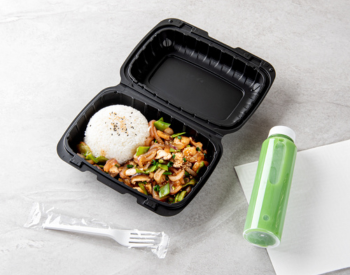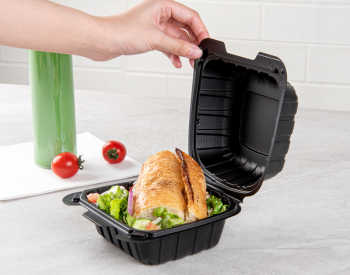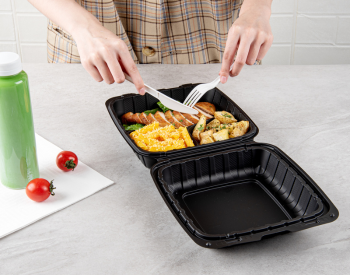In the world of packaging, there is a constant quest for innovative
materials that can enhance the performance and sustainability of
containers. One such breakthrough is the utilization of mineral-filled
containers. These containers are revolutionizing the industry with their
unique properties, offering several advantages over traditional
packaging solutions. This article explores the key features that set
mineral-filled containers apart and their diverse applications in
various industries.
Understanding Mineral-Filled Containers
Mineral-filled containers, also known as, mineral-reinforced or mineral-infused containers are manufactured by integrating mineral additives into the primary material, which is typically a type of polymer. These mineral additives encompass substances like calcium carbonate, talc, or kaolin. The integration of these minerals significantly elevates the structural properties of the containers.
Notably, these containers encapsulate up to 40% of natural mineral content. This considerable proportion contributes to the product's durability and is instrumental in reducing the volume of plastic needed for each container's production.
Manufacturers foster a balance between cost-effectiveness and superior performance. This is achieved through blending minerals into the polymer matrix, a strategy that optimizes expenditure without compromising the quality of the final product.
Advantages of Mineral-Filled Containers
These containers have proven to be a versatile solution, addressing the needs of businesses while aligning with the global call for more eco-friendly practices. Let's delve into the advantages that make mineral-filled containers stand out in the competitive world of modern packaging.
Strength & Stiffness
One of the most notable benefits of mineral-filled containers is their improved strength and stiffness compared to standard polymer containers. The mineral fillers reinforce the polymer matrix, making it more robust and capable of withstanding higher loads and stresses. This strength is especially advantageous for transporting heavy or fragile goods, reducing the risk of damage during transit.
Lightweight & Eco-Friendly
Despite their augmented strength, mineral-filled containers often retain a lightweight nature. Incorporating minerals enables manufacturers to decrease the amount of raw polymer material required, making the containers more resource-efficient and environmentally friendly. Consequently, they contribute to lower shipping expenses and a reduced carbon footprint.
Barrier Properties
Mineral fillers can enhance the barrier properties of containers, making them more resistant to moisture, oxygen, and other external factors that could compromise the contents. This is particularly valuable for packaging sensitive products, such as food, pharmaceuticals, and chemicals, where product integrity is critical.
Cost-Effectiveness
Mineral-filled containers are more cost-effective than containers made entirely from virgin polymer resins. Adding mineral fillers reduces the amount of expensive polymer material required, making them an economical choice for businesses looking to optimize their packaging costs.
Applications of Mineral-Filled Containers
Let's explore the vast array of applications where these containers have become the preferred choice, revolutionizing the packaging landscape.
Food Packaging
In the food industry, maintaining the freshness and quality of products is paramount. Mineral-filled containers provide the necessary barrier properties to protect food items from external contaminants, extending their shelf life and ensuring consumer safety. From dairy products to dry snacks, these containers find diverse applications in the food packaging sector.
Pharmaceuticals & Healthcare
The pharmaceutical and healthcare industries demand packaging solutions that preserve the efficacy of medicines and medical devices. Mineral-filled containers offer a combination of strength and barrier properties, safeguarding pharmaceutical products from moisture and UV light, which can degrade their potency.
Chemical & Agrochemical Packaging
Chemicals and agrochemicals are often hazardous substances that require secure and robust containment. Mineral-filled containers provide the strength and chemical resistance necessary to store and transport these products safely.
Are Mineral Filled Containers Biodegradable?
Mineral-filled containers, in general, are not biodegradable. The term "mineral-filled containers" refers to containers made by incorporating mineral additives into the base material, which is typically a polymer. These mineral additives, such as calcium carbonate, talc, or kaolin, serve to reinforce and enhance the structural properties of the container. While these mineral fillers can offer several advantages, they do not contribute to biodegradability. Mineral-filled containers, being primarily composed of polymer materials with mineral additives, do not readily biodegrade in the natural environment.
The presence of mineral fillers may even slow down the biodegradation process of the polymer component. As a result, these containers may persist in the environment for extended periods unless they are properly managed through recycling or waste management systems. However, it is worth noting that efforts are ongoing in the packaging industry to develop more sustainable alternatives. Some manufacturers are exploring the incorporation of biodegradable additives into polymer-based containers to improve their environmental impact. These additives can enhance the biodegradability of the containers and promote a more eco-friendly end-of-life disposal.
When choosing packaging materials, it is essential to consider the specific environmental requirements and sustainability goals of the application. While mineral-filled containers may not be biodegradable, but they still offer advantages in terms of strength, barrier properties, and cost-effectiveness, making them a viable option for certain applications where biodegradability is not the primary concern. Though, for environmentally sensitive applications or businesses aiming to reduce their environmental footprint, exploring biodegradable packaging alternatives remains a promising avenue for sustainable packaging solutions.
Upgrade Your Packaging
Mineral-filled containers represent a groundbreaking advancement in packaging technology, offering a range of benefits that distinguish them from traditional containers. With their improved strength, lightweight nature, and enhanced barrier properties, these containers are becoming increasingly popular in various industries, from food and pharmaceuticals to chemicals. As businesses continue to seek sustainable and efficient packaging solutions, mineral-filled containers are poised to play a significant role in shaping the future of the packaging industry.








